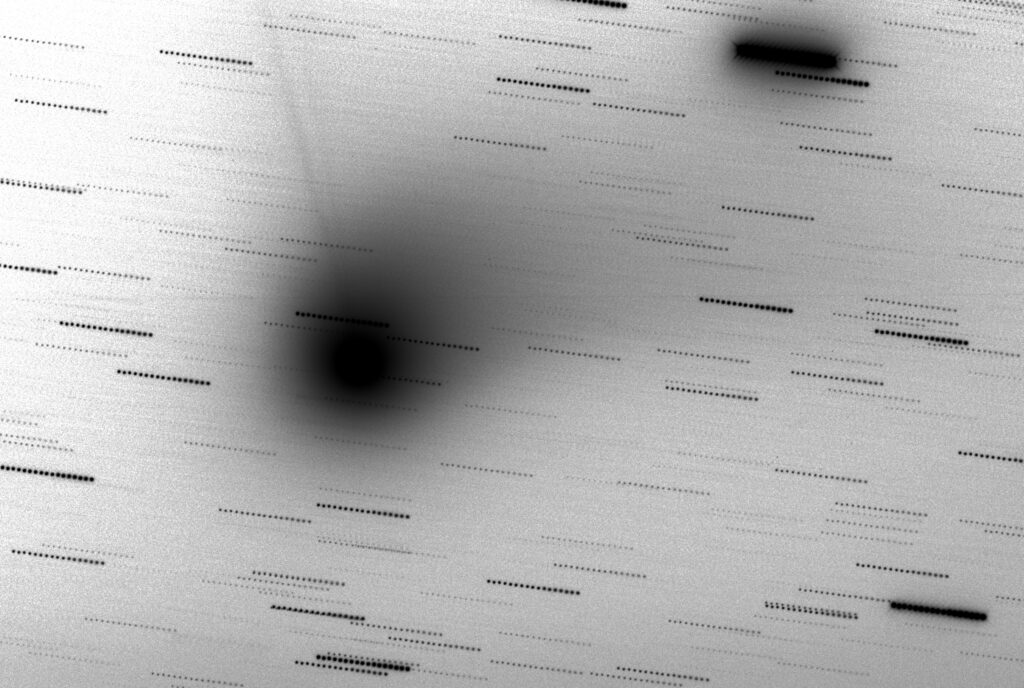Date published: 2016-01-28
Observing Comet C/2013 US10 (Catalina)
Comet C/2013 US10 (Catalina) was first discovered by the Catalina Sky Survey on October 31, 2013. It originates from the Oort cloud, a vast spherical reservoir of comets far beyond Neptun. By chance, gravitational perturbations can push Oort objects into the inner solar system, where they are eventually discovered. In some cases, comets get bright enough to be observed by naked eye or with small amateur telescopes or binoculars. The latter one is true for Comet C/2013 US10 (Catalina).
On Jan. 17, 2016 the comet passed its closest point to Earth at a distance of 110 million km. Using my 10-inch Newtonian telescope, I have imaged the comet that day from a suburban location. The result shown below is a stack of 17 frames of 120 sec. exposure time each. The inverted version on the bottom clearly shows the two tails of the comet.


